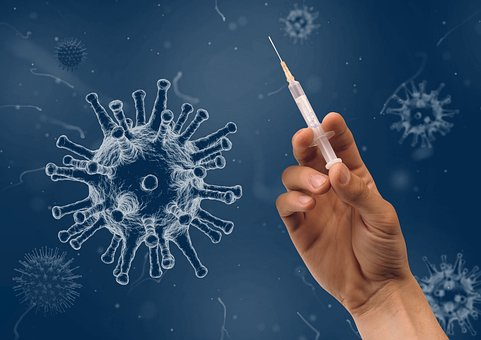Last year, Europe and the US saw the largest bird flu outbreak. This highly contagious disease has killed a million farmed and wild birdlife. The disease will continue to spread if no strong prevention measures are taken.
The issue has called for the rapid development of a bird flu vaccine to prevent future outbreaks. Researchers at the University of Wisconsin School of Veterinary Medicine, in the U.S., are currently developing a vaccine to control the outbreak and protect poultry flocks.
Coffee Table Science spoke to Dr Adel Talaat to know more. He’s a professor of pathobiological sciences at the School of Veterinary Medicine, US, and is working on producing a vaccine that would protect the birds from current and future strains of the virus.
Image Credits: Pixabay
What is bird flu? How is it caused?
Avian influenza, commonly known as bird flu, is a viral infection caused by avian influenza Type A viruses. These viruses affect every bird species but infections in poultry birds also have an impact on humans indirectly. The virus does not usually infect humans but measures taken to prevent its spread affect the food supply.
One of the most prevalent avian influenza viruses is H5N1 which is deadly for birds and has also infected humans. H5N1 can easily spread among domesticated birds. In humans, it is transmitted through contact with infected bird faeces and mouth, eye, or nasal secretions.
What is happening in the US and Europe?
A lethal strain of bird flu has been spreading around the globe since 2021. Highly pathogenic avian influenza (HPAI) was found in South Carolina in mid-January 2022. The disease spread among backyard and commercial flocks in the Midwest and along the East Coast. The first case of bird flu was observed in a chicken flock in Wisconsin in March 2022. In January 2023, many US states reported that nearly 58 million poultry were affected by the bird flu.
Meanwhile, the cases of bird flu are worse in Europe. The region faced more than 2,500 outbreaks in farms across 37 countries between October 2021 to September 2022. Around 50 million birds were culled across the continent due to the outbreak. If strong reduction measures are not implemented, the outbreak will continue to spread.
Image Credits: Pixabay
Where is the vaccine?
As the cases of H5N1 are higher in Europe and the US, researchers are concerned about the prompt distribution of the vaccines as the virus may evolve to spread among the people soon. So, they are making an effective vaccine against it using a technology referred to as nano vaccine. This technology helps to manufacture modern vaccines using nano-particles (a sort of antigen) that signal cells to produce immunity against the disease-causing pathogen.
To know more, we interviewed Dr Adel Talaat (AT).
CTS: What is the vaccine’s current status?
AT: Since the first case was spotted in March 2022, my team and I have begun working on developing the vaccine. We are currently testing the vaccine on different animal species along with the poultry flocks to check its intensity and see how effective it is at its present state and how advanced it could be made. They are testing it on more chickens to find its effectiveness. However, the development is on an initial basis, and more work is required to make a fully-advanced vaccine with maximum potential.
CTS: What hurdles are you and your team facing in making the vaccine?
AT: Our work depends on genetic sequencing of the data collected from different avian influenza strains. Since they are viruses, they are prone to genetic mutations which makes it difficult for us to find antigens. The process of manufacturing vaccines is highly complicated as genetic modifications occur in the compositions of the virus. Hence, we need to work on optimising the process. Also, there’s an issue of funding and investment as the research work will require a lot of capital too.
CTS: How are you planning to tackle these hurdles?
AT: We are working on improving our technologies so we could speed up the process of vaccine development. Also, we are tying up with different institutes for management and funding issues. Moreover, we are innovating new technologies to make this vaccine less expensive and readily available.
“When dealing with animals, especially poultry, it’s important to keep in mind that we would need to be able to vaccinate an entire flock,” said Talaat. “We also need to think about how to make this technology inexpensive so it will be economically viable.”
CTS: What are your future expectations for this vaccine?
AT: We believe that this vaccine could protect bird flocks with maximum potential may be up to 100 per cent. Many poultry farm owners could avail that to a large extent and prevent the spread of the disease. This could be helpful in tackling future outbreaks.
Alternatively, you could Buy us a coffee or follow us on Facebook, Twitter, Pinterest or Medium!






1 comment
[…] the ability to screen eggs for gender has the potential to revolutionise the poultry industry, particularly in terms of improving animal welfare and reducing environmental […]